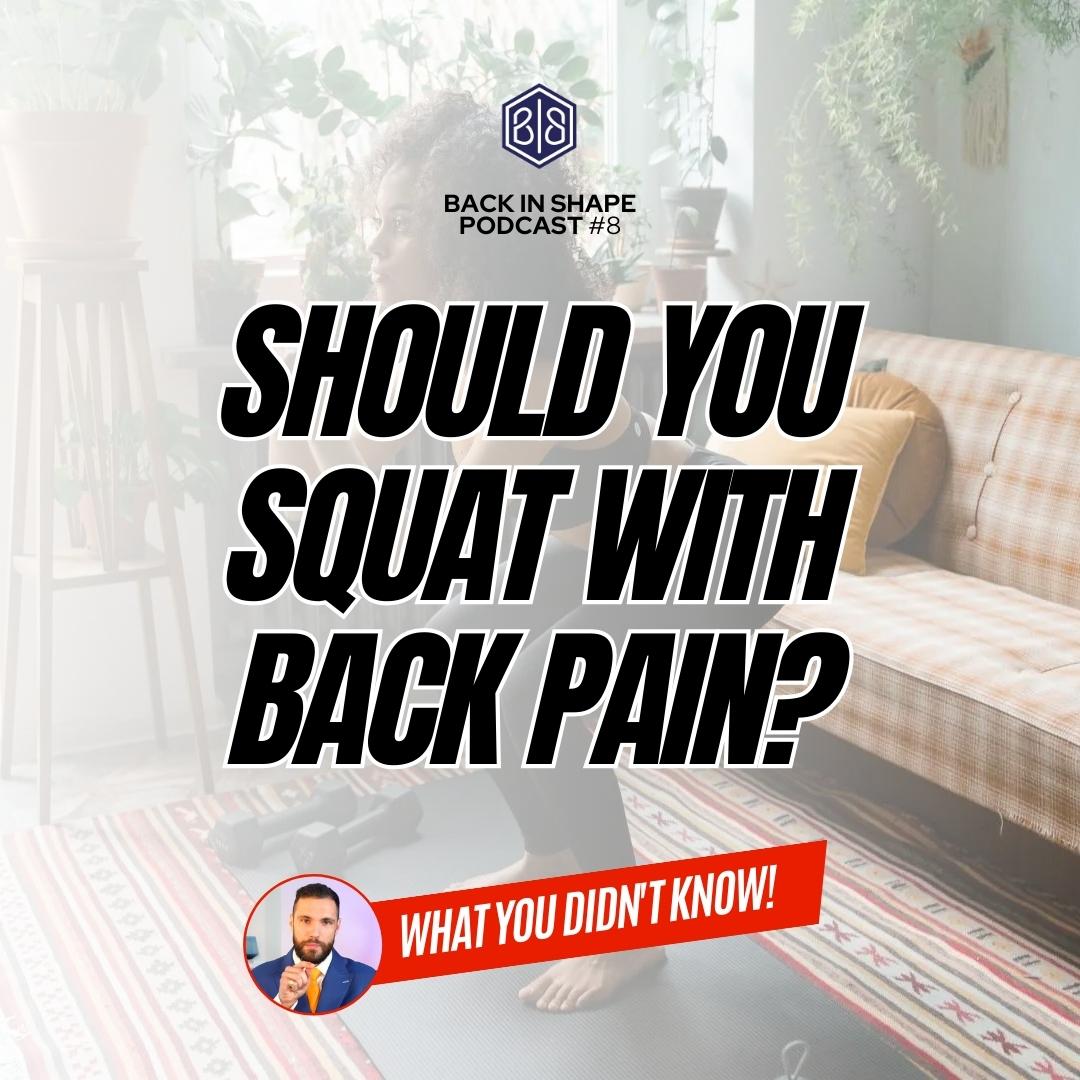If your back pain is very acute and is causing you radiating symptoms, it’s important to get that checked out and to get some treatment by someone who is local to you before venturing into the gym, as it’s likely you’re doing something on a daily basis that is causing compression into your spine. Disc problems generally occur as a result of poor posture over a long period of time causing your spine to be compressed.
Strengthening Your Back & Core
When you’re recovering from a disc bulge, you’re likely feeling fundamentally good, but it’s important to start strengthening your lower back and your legs in order to effectively help prevent against re-injury in the future. Doing squats in the gym will certainly help train those muscles, so it would be a sensible move. It helps your body to learn how to deal with stresses and strains of gravity beyond that which you would be likely to encounter on a day-to-day basis. The last thing you want is for your back to become weak enough that someone handing you a shopping bag might just be the last straw and you end up back in pain. A lot of people will shy away from doing any sort of weight bearing activity, but in the long-run this isn’t healthy for your body.
How To Squat With Correct Form
When you’re doing your squats, make sure you have a nice lordosis going in your lower back. If you’ve read any of our other articles in the past you may have heard us talk about this. A lordosis is the natural curve that arches in the lower back – it’s supposed to be there. We do hear frequently that when patients have had scans elsewhere, when they do come in to see us they are worried their doctor has told them they have a lordosis. Often the language used when discussing spinal curves may seem technical (or like a condition itself), but it’s important to understand what you’re being told and even ask for it to be explained in simpler terms if you don’t quite understand.
What is a Lordosis?
A lordosis is supposed to be there, it helps your body to absorb the stress of everyday activities and distribute effectively the weight throughout your body. It also helps to absorb shock, which means you need to keep it when you do exercises like squats and deadlifts, to avoid excessive compression going through your lower back – which can be quite a considerable amount when you consider how much weight you’re likely to lift with if you a regular gym goer. You may need to practice your form with lower weight in order to get your form right, so drop down to a lighter weight and focus on your technique. Usually, as soon as people start lift higher weight the bum starts to tuck under, putting more pressure through the lumbar sacral disc, and that’s one of the most common areas that a problem happens. Keep your lordosis, keep good form, and keep your core engaged.

Fix Your Back Pain From Home
We’ve created a home based program to help you fix your back pain from home, perfect if you’ve got lower lumbar injuries, such as bulging discs in the L4, L5 & S1 region. These exercises are safe and effective.
Fix Your Back From Home
It couldn’t be easier to start your online back pain relief program today. Click the button below and on the next page you can sign up straight away.
Improving Range Of Motion In A Squat
To avoid your bum tucking under, you may need to work on your range of motion or get a little bit stronger. You may find stretching out your calves to be helpful, and this is something the staff in particular at The Mayfair Clinic have found to be helpful to improve flexibility. If you have very tight muscles, this is going to impact your range of motion so it’s definitely going to have a massive impact on your range of motion in a squat – which will cause undue pressure at the bottom of a squat. Start small in weight to make sure you get your form correct, that way you can start to add a little bit of weight routinely over a period of time, to increase the durability, the resistance of your back to that sort of weight – this way it’s done safely.
Should You Use A Weight Lifting Belt?
The final thing to bear in mind if you are a regular weight lifter, is to not use a weightlifting belt. If you’ve got a history of back pain, it’s one of the worst things you can do unless you’re looking to be an elite level power lifter. You should not be using a weightlifting belt, nor using one for any other activities like bench press. The purpose of weightlifting and doing squats is to build and use your own muscles, as well as to strengthen your core and its ability to deal with loading. A weightlifting belt will artificially strengthen your core and back so that you can lift heavier, but it will take the pressure of those muscles at the same time, making your weight lifting essentially useless. If you want to actually build muscle, don’t use a weight lifting belt. It will also put an artificial pivot through the midsection of your back, that will mean you’re going to focus force excessively either just below the weight belt, or just above.
If you’ve been suffering with back pain, I hope that explanation has been helpful for you. If you are looking to get back into your regular gym sessions, but your back pain is getting in the way, call us today to see how we can be of help for you. Call us on 0203 947 3222 or email us at info@themayfairclinic.com. Most back pain can be resolved and avoided if it’s dealt with soon, or quickly with the right advice.
Contact Us.
Email Us
info@themayfairclinic.com
Call Us
0203 947 32 22
Clinic Address
4 Cavendish Square, London, W1g 0PG.
